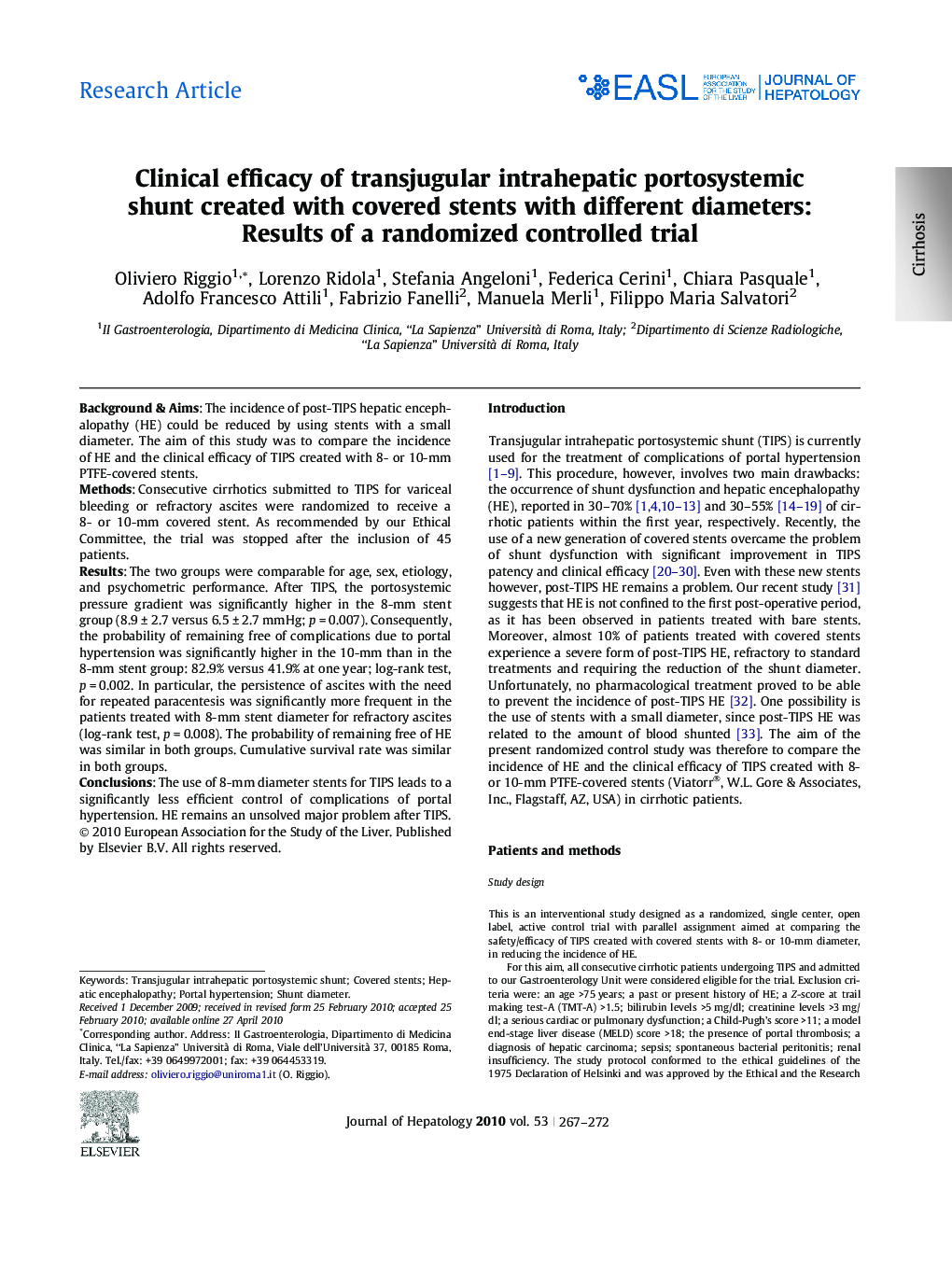| Article ID | Journal | Published Year | Pages | File Type |
|---|---|---|---|---|
| 6105617 | Journal of Hepatology | 2010 | 6 Pages |
Background & AimsThe incidence of post-TIPS hepatic encephalopathy (HE) could be reduced by using stents with a small diameter. The aim of this study was to compare the incidence of HE and the clinical efficacy of TIPS created with 8- or 10-mm PTFE-covered stents.MethodsConsecutive cirrhotics submitted to TIPS for variceal bleeding or refractory ascites were randomized to receive a 8- or 10-mm covered stent. As recommended by our Ethical Committee, the trial was stopped after the inclusion of 45 patients.ResultsThe two groups were comparable for age, sex, etiology, and psychometric performance. After TIPS, the portosystemic pressure gradient was significantly higher in the 8-mm stent group (8.9 ± 2.7 versus 6.5 ± 2.7 mmHg; p = 0.007). Consequently, the probability of remaining free of complications due to portal hypertension was significantly higher in the 10-mm than in the 8-mm stent group: 82.9% versus 41.9% at one year; log-rank test, p = 0.002. In particular, the persistence of ascites with the need for repeated paracentesis was significantly more frequent in the patients treated with 8-mm stent diameter for refractory ascites (log-rank test, p = 0.008). The probability of remaining free of HE was similar in both groups. Cumulative survival rate was similar in both groups.ConclusionsThe use of 8-mm diameter stents for TIPS leads to a significantly less efficient control of complications of portal hypertension. HE remains an unsolved major problem after TIPS.
